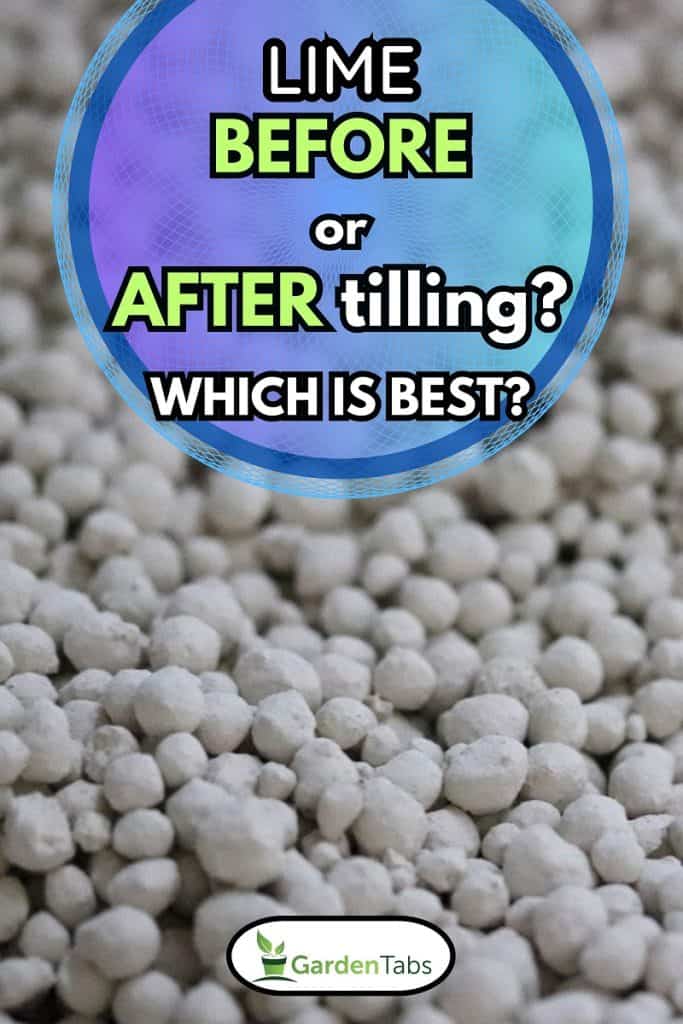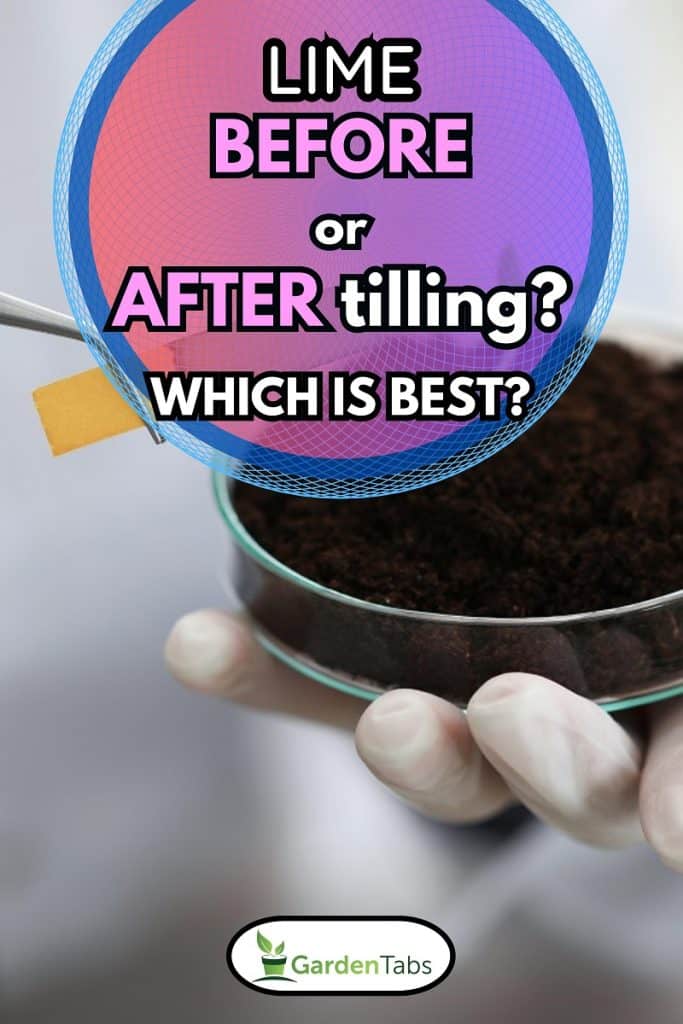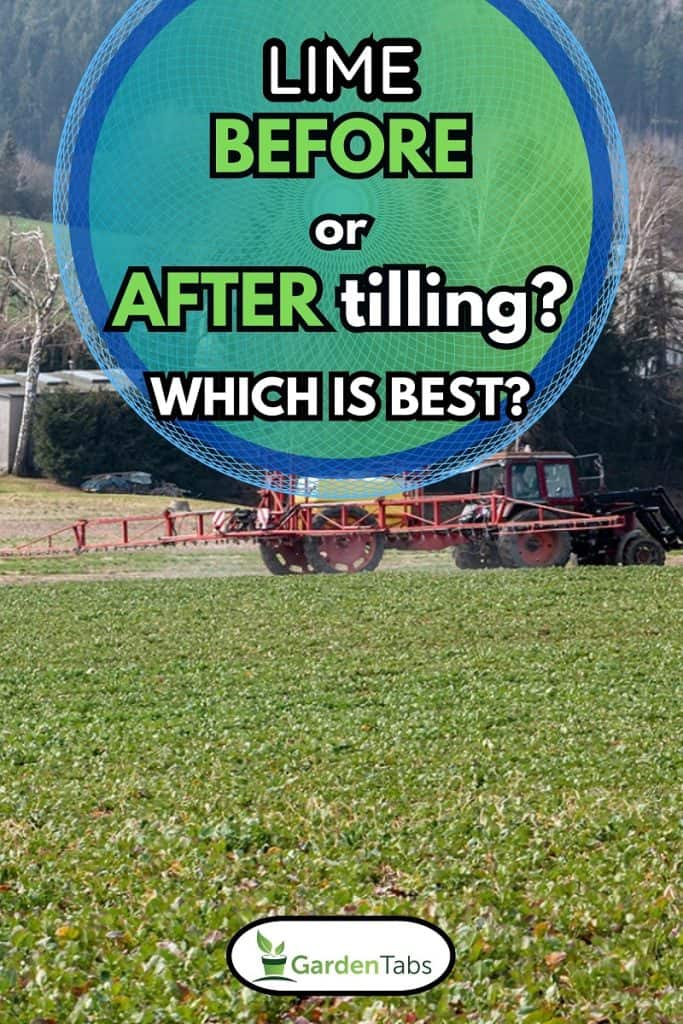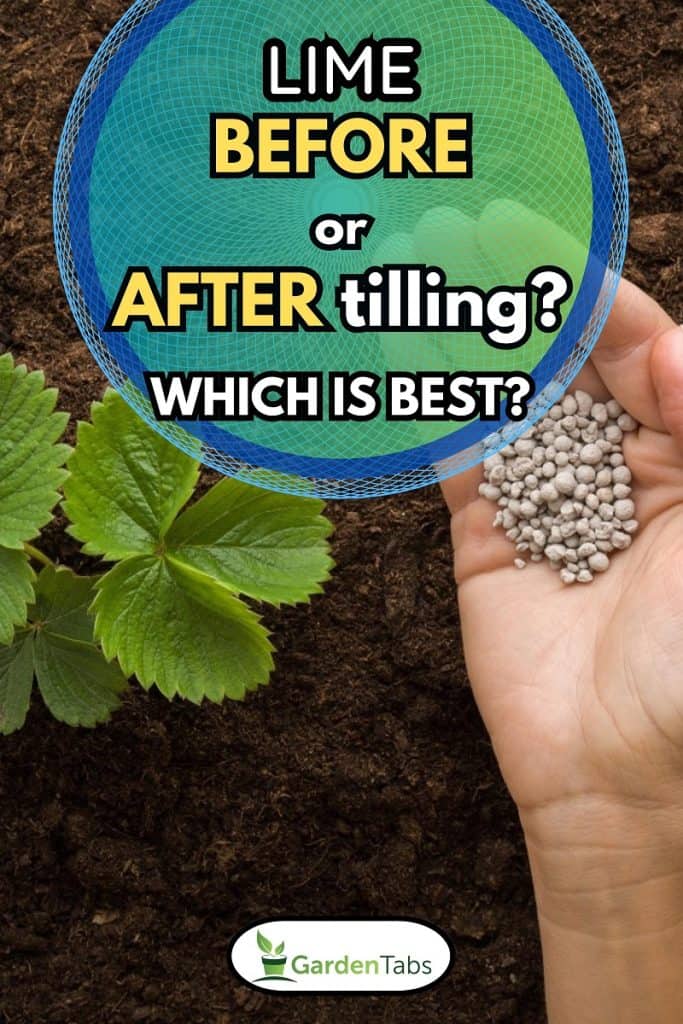Soil pH is one of the many factors that affect the growth of your plants. Some grasses prefer acidic soil while others thrive in higher pH. You can easily manipulate the soil pH by adding lime. The question is, should you do it before or after tilling? We researched this question and have answers for you.
You should apply lime before tilling so it can be properly incorporated into the soil and allow for better distribution. Keep in mind that lime has limited solubility and only affects the acidic soil that it has come in contact with.
If you apply lime after tilling, it can only change the pH of the top inch or two of the soil. This won't be entirely beneficial to plants, especially those that thrive in deeper soils.
Now that you have an idea of when to apply lime, let’s talk more about liming, its benefits, and the proper procedures to follow. This way, you can master the art of liming and provide healthy, pH-appropriate soil for your plants.
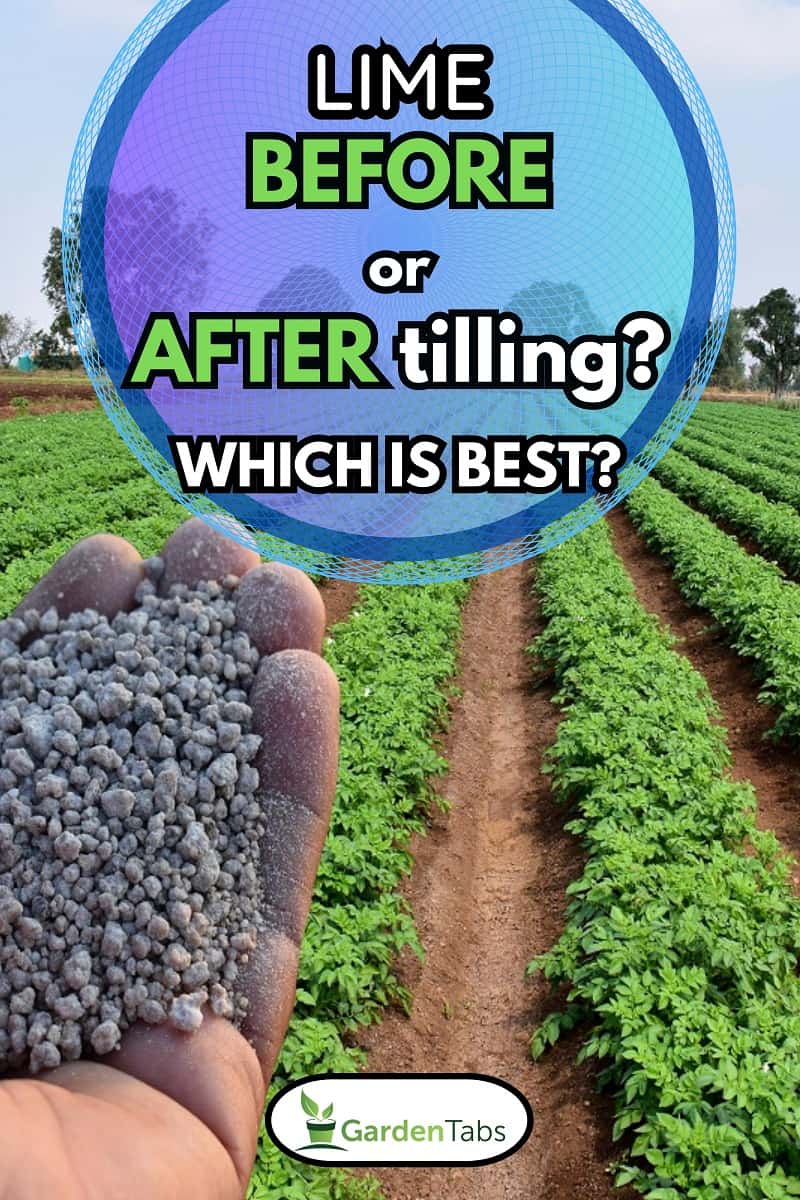
What Is Lime?
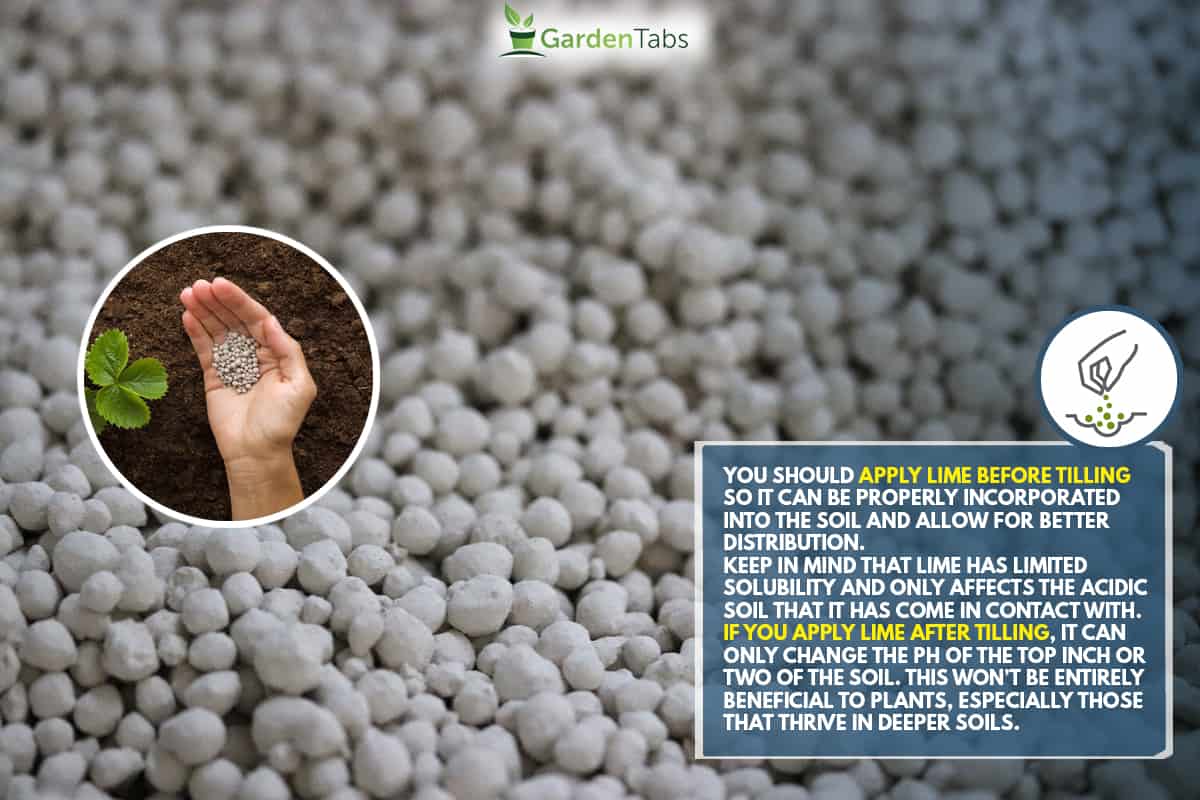
In gardening, lime is a soil amendment from limestone containing calcium and magnesium carbonate. Adding lime to the soil increases its pH to produce less acidic soil.
As mentioned, it is only a soil amendment, so it should not replace fertilizers. Nevertheless, altering the pH improves soil quality, making the nutrients more available to the plant.
Adding lime to the soil is a good practice because it gives the soil a boost.
Check out Jobe's Lime Soil on Amazon.
Why Soil pH Matters
Soil pH refers to the acidity or alkalinity of the soil. It naturally depends on the rock it originated from and the processes it has undergone. Normally, soil increases in acidity over time.
Soil acidification is a natural phenomenon that is accelerated by productive agriculture. This affects the number of soluble nutrients and chemicals in soil water that consequently determines the nutrients available to the plants.
While most nutrients are available at a pH near neutral, some prefer a more acidic or alkaline nutrient. Strongly acidic or alkaline soils may hinder plant growth.
A 2016 study shows that you should be looking for a pH between 5.5 to 7.5. You should identify the early signs of an off-balanced pH to quickly amend the situation.
Soil Testing
Although there are telling signs of acidic soil, such as stunted grass growth and weed infestation, there is no better way to determine the correct pH condition of your soil than by conducting a soil test.

There are two ways to sample your soil. You can either send to a lab and have them test it out, or you can do it yourself. Keep in mind that tests done in a lab will yield more accurate results and will provide you with complete numerical data for your soil.
You can do the soil test by following these steps.
- Use a trowel and dig samples from 4-6inches of your garden bed. Get samples on different locations of your plot to have an average representative soil sample.
- Remove any sticks, debris, and large clumps in your soil.
- Add water to the soil enough to make it muddy.
- Add vinegar to your water, and if it fizzes or develops small bubbles, it is alkaline.
- If there is no bubbling, take another sample and repeat the process, but this time, add baking soda. If it fizzes or forms bubbles, it is acidic.
- If there is no bubbling when vinegar or baking soda were added, your soil is most likely neutral and has no problem.
Benefits Of Liming
Soil amendments adjust the conditions of the soil, making it more suitable for your plants. When soils become too acidic for your crop, adding lime will help you correct the pH.
Liming is such an essential part of gardening that it has become a regular practice in some states.
- Nutrient availability is one of the top benefits of liming. Highly acidic soil is generally unwanted in gardening, as it prevents your plants from absorbing and maximizing the nutrients in the soil. Raising the pH level adds phosphorus and zinc, which then promote good bacteria. However, a high pH in the soil causes chlorosis which makes the leaves look yellowish.
- Most vegetables like to grow in alkaline soil. So when growing them, liming may be helpful in producing healthier plants. But make sure to do your research, as others prefer a slightly acidic environment.
- Liming improves the penetration of water into the soil. Raising its pH can rehydrate your soil and prevents the drying out of the plants.
- Research claims that grass production can be increased by merely increasing the ph from 5.5 to 6.3. This alone is concrete evidence of how liming effectively works in grass fields.
- Liming improves soil structure and breakdown of organic material by increasing the earthworm activity within the soil.
How Much Lime To Add?
Are you now convinced of the benefits of adding lime to your garden plots? Don’t be hasty—check the pH of your soil before you add it.
Anything too much is bad, even the good ones. If you add lime right away without analyzing your lawn, it may damage the whole garden.
The same 2016 study also recommends that a 1,000-square-foot area of lawn requires 50 pounds of lime. During the initial application, a small amount of lime could be applied to groom your soil.
If you need more than 50 pounds apply it twice a year. There's also an online calculator that can help you determine the amount of lime needed if you have a smaller lawn.
Best Time To Add Lime
Spring and fall are the ideal times to apply lime to your lawn. Your lawn actively grows in the early spring, perform core aeration, then add your lime for further improvement.
Fall is a great time to add in your lime due to the rainy weather. The abundant rain and snow help in the breakdown of lime and eventually raise the soil’s pH.
Soil usually becomes more acidic during early spring, which makes it unhealthy for the plants. Neutralizing the soil allows your lawn to thrive by freeing up nutrients in the soil.
How To Apply Lime

A wide range of garden lime is available on the market. Choose one that is best suited for your lawn.
If you’re unsure, you can contact your local garden center for help in deciding which to use. There are three ways to apply lime: surface application, surface application then deep rip, and direct injection.
Surface Application
When applying lime, your goal is to have even and complete coverage of your lawn. Use a drop-style or rotary spreader and apply half of the recommended amount of lime to your lawn.
Do this in one uniform pattern. Then apply the second half of your lime, crisscrossing the previous application pattern. You should have evenly applied lime across your whole lawn.
Lastly, sprinkle your newly limed lawn with water to help with the absorption.
Check out this Chapin International Spreader on Amazon.
Surface Application Then Deep Rip
As mentioned earlier, you should apply before tilling. Spread the lime evenly before deep-ripping, plowing, or spading.
This ensures proper distribution and thorough incorporation into the ground while tilling. There appears to be higher contact between lime and the soil in this set-up.
Direct Injection
This method uses deep tillage implements to inject lime in deep places. Research suggests that subsurface acidity can immediately be improved with the correct distribution of lime.
However, further research must be done to reduce the high costs of the machinery and ensure 100% distribution of lime.
You can find this Sun Joe Electric Tiller on Amazon.
How Often Should You Add Lime?
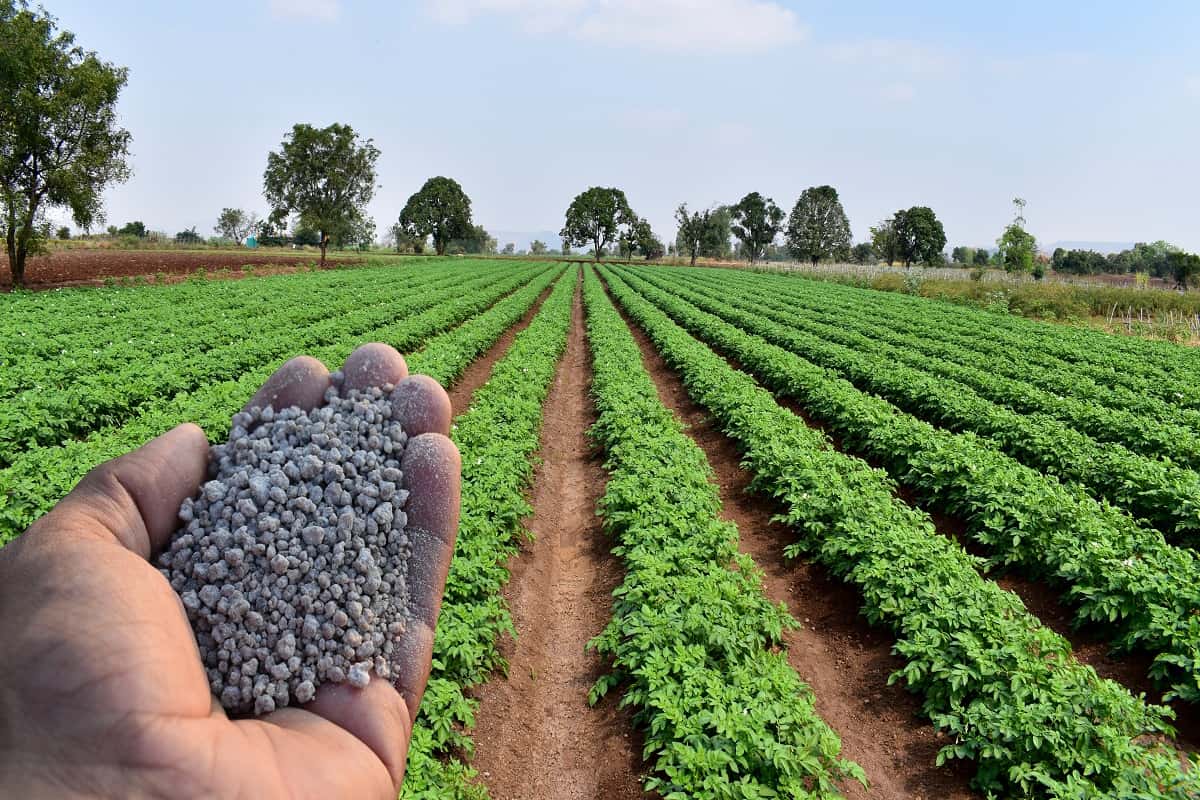
The frequency of adding lime to your lawn depends on the soil’s pH. You should check the pH every one to two years and only apply lime when the pH is dropping.
Plants have varying preferred pH ranges, and adding too much may destroy your grass. When this happens, lawns will turn yellow, and grasses may die.
Wrapping Up
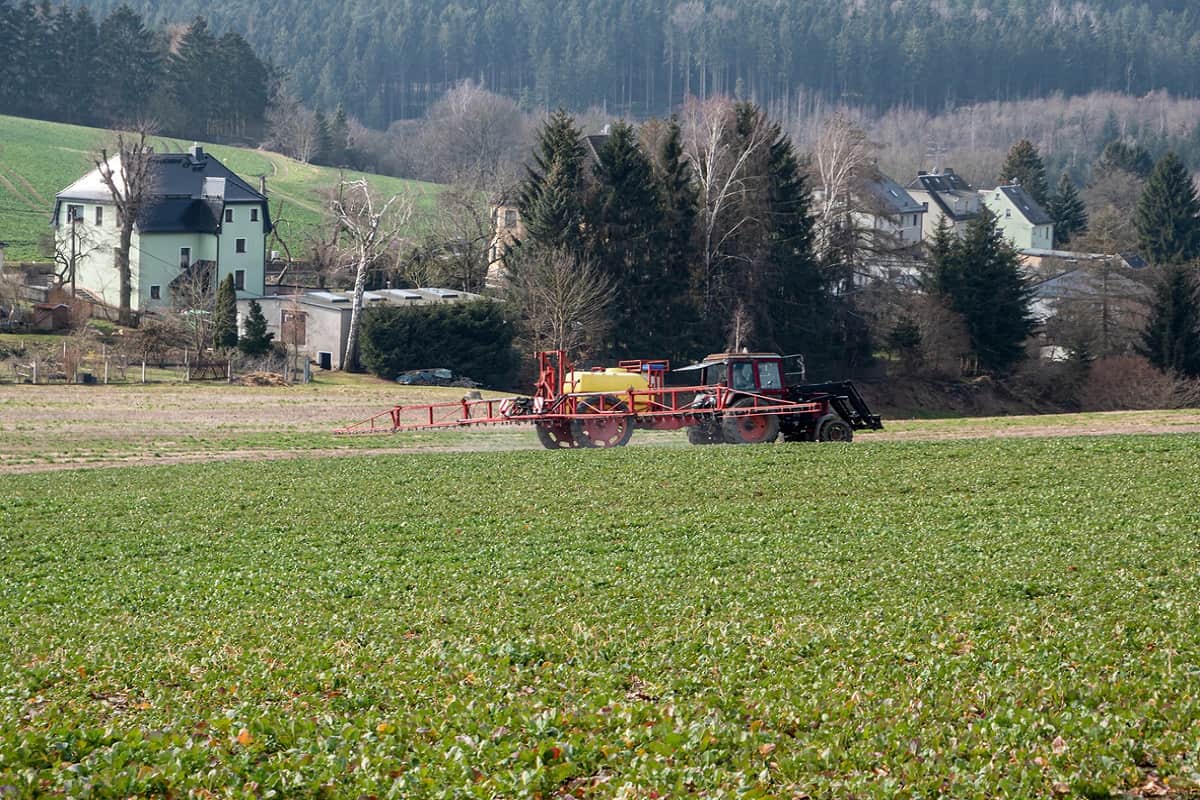
Lime is an effective soil amendment for improving your lawn. However, if it is mishandled, it can be dangerous and destroy the balance in your soil chemistry.
To ensure that you apply lime properly, conduct a soil pH test with the help of a laboratory or do it at home. Add lime before tilling or any other type of ground disturbance. This aids in incorporating lime into your lawn, as it reacts better if it comes in contact with the soil.
Overall, liming is a simple but critical gardening procedure that can make or break your whole lawn. So make sure you do it properly to give an additional boost to your plants!
Want to learn more about soil fertilizers and plants? Check out some other posts that may guide you in your future gardening projects!
5 Best Fertilizers To Get Dark Green Grass Growing

